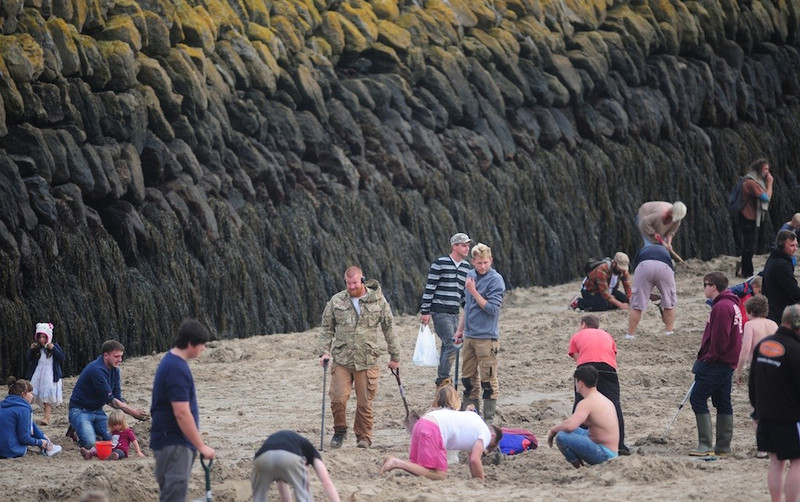
LONDON - Thirty gold bars have been buried on a beach in Britain by a German artist, prompting a flood of bounty hunters with metal detectors to seek their fortune Friday.
|
 |
|
Dozens of people search with metal detectors and anything else that comes to hand in an effort to secure one of the hidden nuggets, at Outer Harbor beach near Sunny Sands, in Folkestone, Kent, Southeast England, Aug 28, 2014. [Photo/IC] |
The gold bars, worth a total of £10,000 (13,000 euros, $17,000), were buried in Folkestone, southeast England, by Berlin-based Michael Sailstorfer as part of an upcoming arts festival.
Members of the public will be allowed to keep any of the 24-carat bullion which they find.
"There are 30 gold bars buried there, along with a lot of washers, so if you bring your metal detector you will find a lot of washers before you find any gold," festival curator Lewis Biggs told the BBC.
"We will never know if the gold has been found or not."
One treasure hunter, John Coker, told the Guardian newspaper: "It is the first art in the world where I've hopped in a car and drove to see it straight away, so that's something."
The bars, worth around £300 each, are a few centimeters long.
The Folkestone Triennial's website said the German artist behind the project was interested in "the disruption of the everyday".
"Sailstorfer is intent on expanding the notion of classical sculpture and Folkestone Digs is a continuation of his aim 'to make art that comes less from the head and more from the stomach,'" it said.